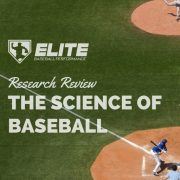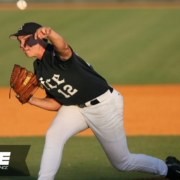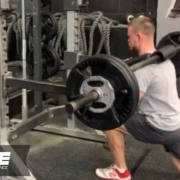SLAP Injuries in the Baseball Player: Classification and Subjective Evaluation
A superior glenoid labrum injury is a common reason for shoulder pain in baseball players.
These injuries were initially explained by Dr. James Andrews in 1985 secondary to a biceps tendon origin pathology. The injury is described in that the biceps tendon exerted a traction-like force to actually “peel” the labrum off the glenoid structure, itself.
These superior labral tears, anterior to posterior (SLAP), have several different types can be stable or unstable that are under the umbrella that was previously described that result in the “peel back” etiology.
One can also back the argument that due to the high loads of eccentric contraction that occur in the late cocking phase of throwing most baseball players (pitchers in particular) have some level of a SLAP tear or superior labrum lesion that is, for the most part, asymptomatic in nature. Some SLAP tears may even be considered necessary adaptations to the throwing shoulder for baseball players.
Taking a brief look at the pathomechanics of the throwing motion and the underlying structures, one can quickly understand why the anterior portion of the labrum is under immense stress.
During throwing, particularly in late cocking phase at maximal external rotation, the humeral head will shift from a posterior to inferior direction. However, in these types of overhead athletes who likely already have anterior capsule laxity, the shoulder will have exhibit a greater willingness to shift the humeral head in a posterosuperior direction.
This directional-preference the shoulder takes subjects the superior labrum to greater load, particularly in a torsion-manner.
There’s several different types of mechanisms that can be explained by many different types of classification systems. For now, let’s take a look at the different mechanisms as described by Snyder for these types of injuries:
Classification of SLAP Tears
The original classification was proposed by Snyder in 1990, where he bunched SLAP tears into four primary mechanisms:
Type 1: These types of lesions are best characterized by degenerative fraying of the superior labrum with not only an intact, but stable biceps tendon. Snyder noted that this type of variant classification was present approximately 11% of the time. These types of lesions are most consistent with a rotator cuff pathology.
Type 2: These types of lesions include a detachment of the biceps anchor from the glenoid that are unstable in nature and are considered the most common variant encountered. Snyder stated that these represent 41% of all SLAP injuries.
Type 3: These types of lesions include a “buckethandle”-like tear of the superior labrum without disruption of the biceps tendon anchor. However, the bucket-handle can become mobile and become entrapped within the glenohumeral (shoulder) joint, creating a very painful clinical picture. This type of lesion is consistent with traumatic instability, in addition to a Type 4 tear.
Type 4: These types of lesions also include the “bucket handle”-like tear of the superior labrum. However, this type of tear also includes an unstable biceps tendon. It should be noted that the level of biceps involvement in this type of lesion can be extremely variable. This type of lesion is the least common variation of a SLAP tear.
Subjective Examination Pearls
Examination of an athlete with a SLAP tear that is pathological in nature can be very challenging. It’s likely that a patient who has sustained a SLAP lesion has another present injury. This may include a concomitant rotator cuff injury or even a Bankart lesion of the anterior labrum.
A great subjective examination is key to truly developing a great conclusion of what the patient has going on.
However, a subjective examination can become very difficult as the mechanism is often different in players. It may include a single traumatic event or can be gradual over time as part of an insidious etiology.
Amongst all athletes, the most common clinical symptom that will be apparent is anterior shoulder pain. These can lead to performance issues such as decreased control while throwing or even a decrease in throwing velocity.
The patient may also note an increase in clicking or other types of mechanical symptoms.
While certain types of labral injuries can involve concomitant instability, most SLAP tears in isolation are not unstable in nature.
Altogether, while the subjective examination can be challenging, it’s ultimately imperative to understand that these types of injuries are commonplace in baseball players. In many players, SLAP tears are asymptomatic and not a concern.









Hi there
I am a physio in Belgium, working with youth baseball players here (play the sport myself). I was wondering if you knew any mechanical/force related contributors in SLAP tears. Too much trunk tilt, too strong anterior chain, lack of energy transfer from lower half to upper half… I find SLAP tears really interesting, but I feel I am always running behind them as opposed to staying in front of these injuries.
Thanks in advance!